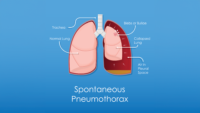Nursing is an ever-changing and ever-evolving profession. There seems to always be a need for more nurses, whether it be registered nurses caring for patients in a variety of settings, educators facilitating the growth of our future nursing professionals, or advanced practice registered nurses (APRN) improving the care of our diverse population.
The clinical nurse leader (CNL) is a relatively new role to add to the list of nurses who care for patients. Unfortunately, many still confuse it with the clinical nurse specialist (CNS), an APRN role. In reality, nurses in both roles work in harmony to boost patient outcomes. To foster that collaboration, it’s important to understand the two roles.
What is the clinical nurse leader?
The American Association of Colleges of Nursing (AACN) says, “Clinical nurse leaders are masters prepared advanced generalists in nursing that were created by the American Association of Colleges of Nursing with a focus on outcomes-based practice and quality improvement.” In essence, CNLs focus on patient safety.
CNLs oversee the safe care of patients by ensuring evidence-based practice is used. They function as part of the interdisciplinary team, involved in planning and implementing care for the patient, providing population-appropriate care, and functioning as a patient advocate. The Clinical Nurse Leader Association defines the CNL role as one with a focus on evidence-based practice, patient wellbeing, excellence in healthcare, risk reduction, and evaluation of healthcare expenditures.
AACN lists the following assumptions for preparing the CNL:
- Practice is at the microsystem level.
- Client care outcomes are the measure of quality practice.
- Practice guidelines are based on evidence.
- Client-centered practice is intra- and interdisciplinary.
- Information will maximize self-care and client decision-making.
- Nursing assessment is the basis for theory and knowledge development.
- Good fiscal stewardship is a condition of quality care.
- Social justice is an essential nursing value.
- Communication technology will facilitate the continuity and comprehensiveness of care.
- The CNL must assume guardianship for the nursing profession.
The AACN created the CNL role to address the healthcare needs of society. The role will facilitate production of nurses who are prepared for leadership roles, execute outcomes-based practice and quality improvement, and manage the healthcare needs of clients.
What is the difference between the CNL and CNS?
Now you might be asking, “But isn’t this what CNS does?” The answer is no. While there are similarities between the two, they are separate roles that can function in unison for the betterment of the patient, family, or community they serve.
How exactly do the CLN and CNS differ and how are they similar? The CNS is an APRN with a focus on macrosystems with three spheres of influence: patient, nursing, and healthcare system. The CNS follows Core Competencies as outlined by the National Association of Clinical Nurse Specialists:
- Diagnosis and treatment within the context of the 3 spheres of influence
- Individualized patient treatment options
- Serve as a leader in the nursing community
- Utilization of evidence-based practice to advance nursing practice
- Collaboration with other healthcare disciplines
- Guidance within the organizational system to assure appropriate nursing care
- Continued growth within the nursing profession through continued research and nursing advancement
- Economic responsibility to ensure that resources are appropriately managed.
As mentioned earlier, the CNL is an advanced generalist (not a specialist, like the CNS) with a focus on microsystems meaning hospital units, outpatient clinics, and home health agencies. In response to confusion from the nursing community, the AACN released a statement to delineate the similarities, differences, and complementarities between the CNL and CNS.
Functions of the CNL and CNS that the AACN statement discusses are roles, use of the nursing process, support of nursing personnel, position in the organizational system, support of evidence-based practice, and position in leadership.
Role
- The CNL provides, as well as supervises, direct care to clients, whereas the CNS is a clinical expert in a particular area. In many states the CNS has prescriptive and diagnostic authority as part of a collaborative practice. Both roles provide care in various healthcare settings.
Nursing process
- The CNL oversees the plan of care for clients by assessing and anticipating risks as well as developing, implementing and overseeing plans of care for the clients at the unit, microsystem level. The CNS exemplifies his or her expertise at a macro level by developing plans of care at an expert level within a specialty aimed at reducing potential health problems, promoting injury prevention, and maintaining comfort for clients and populations they serve. Both roles are essential in providing skilled care and being advocates for clients they serve.
Nursing personnel
- The CNL directly delegates and oversees the care of other nurses on a unit, whereas the CNS provides more of a mentoring role to nursing professionals to advance their nursing practice and as a consultant when patients do not respond to plan of care. Both are important in the planning of patient care and developing relationships with patients and families.
Organizational systems
- The CNL coordinates and communicates with the healthcare team at a microsystem level whereas the CNS communicates within the macrosystem level and across organizational systems. Both roles require effective communication with other healthcare professionals as part of the interdisciplinary team.
Evidence-based practice
- The CNL uses evidence-based practice and quality improvement methods to improve patient care, whereas the CNS expands on these skills by advancing nursing practice through generating research, engaging in research utilization, and translating evidence-based research into practice. Both roles are important in the provision of evidence-based care.
Leadership
- The CNL is not in an administrative role but is at the frontline of patient care. The CNL reports to the manager of the unit he or she is assigned, whereas the CNS as a clinical expert in a particular area of nursing traditionally either reports to the administrator of a specialty area or to the CNO of an organization. Both roles exemplify leadership in healthcare but at different levels in a health care system.
How can CNLs and CNSs partner?
An example of the partnership between the CNL and CNS is the harmonious relationship of those caring for the cardiac population in the University Health Care System. There is some overlap in terms of the two roles because both function as part of a multidisciplinary team, assessing patients, assisting staff members, and using nursing theories as part of their care. Both also help further develop nursing skills of the staff and promote patient education.
However, the CNL is geared more toward caring for patients and at the front line of assisting staff when clinical problems arise. The CNL also supports the inclusion of evidence-based research to ensure best practices for patient care. On the other hand, the CNS functions more as the “go-to” person for staff on the macrosystem level for complex illnesses and therapies and implementing new approach to treatments for these disease problems. The CNS also is involved in orientation of staff and formal education, while the CNL focuses on supporting individual nurses in making appropriate educational decisions.
How are CNLs and CNSs educated?
The CNL graduate curriculum builds on the knowledge and skills of baccalaureate education as defined in AACN’s Essentials of Baccalaureate Education for Professional Nursing Practice. The essential CNL curriculum components address the additional education needs of the graduate CNL nurse identified by the AACN in the Working Paper on the Role of the Clinical Nurse Leader. The essential key points include nursing leadership, providing and managing care, care environment management, clinical outcomes management, health promotion/risk reduction, evidence-based practice, quality, safety and risk management, health care technology, health care systems and organizations, and health care finance and regulation. Graduates of CNL programs are certified by Commission on Nurse Certification (CNC).
As an APRN, the CNS is educated according to AACN’s Essentials of Master’s Education for Advanced Practice Nursing. Core graduate requirements include theory, healthcare policy, evidence-based research, role development, leadership, and health promotion. Courses for the CNS as an APRN include advanced pathophysiology, advanced pharmacology, and advanced health assessment and diagnosis. The CNS also has curriculum requirements dependent on the specialty chosen that include both a didactic and clinical component. Graduates of CNS programs are qualified to take certification exams in some specialties (not all specialties have certifications available). The American Nurse Credentialing Center (ANCC) and Orthopaedic Nurses Certification Board offer a variety of specialty certifications. Other examples of certifying bodies include the Oncology Nursing Certification Corporation (oncology CNS) and the American Association of Critical-Care Nurses Certification Corporation (critical care CNS).
A harmonious partnership
The CNL and the CNS each have the ability to greatly improve care and to affect the healthcare system. Patient satisfaction, overall improvement in care administration, fiscal stewardship, and utilization of evidence-based practices are just some examples of collaboration between the two roles.
As the CNL continues to be implemented into the care team, organizational leaders should take care to educate nursing staff about the function of CNLs, benefits of the role, and how to integrate the CNL into their daily care routine. Also, the CNS should be aware of the CNL’s role and how they may complement each other, while still remaining independent nursing professionals.
Utilization of the two roles for harmonious care is the best course for hospital administrators so they can provide superior care for their patients. Each role provides a multitude of benefits to the nursing profession and the healthcare system as a whole. Implementation of the CNL into the organizational system should be viewed as a benefit to administration and other nursing professionals.
Elizabeth Stuesse is a clinical assistant professor of nursing at Maryville University of St. Louis in Missouri.
Selected references
American Association of Colleges of Nursing. Competencies and Curricular Expectations for Clinical Nurse LeaderSM Education and Practice. Published October 2013. http://www.aacn.nche.edu/publications/white-papers/cnl. Accessed March 17, 2014.
Baernholdt M, Cottingham S. The clinical nurse leader—new nursing role with global implications. Int Nurs Rev. 2010;58:74-8.
Commission on Nurse Certification. CNL certification guide. American Association of Colleges of Nursing Web site.
http://www.aacn.nche.edu/cnl/cnl-certification/pdf/ExamHndbk.pdf. Published 2013. Accessed October 25, 2013.
FAQs. Clinical Nurse Leader Association Web site. http://www.cnlassociation.org/faqs. Updated 2013. Accessed April 19, 2013.
Frequently Asked Questions. American Association of Colleges of Nursing Web site. http://www.aacn.nche.edu/cnl/frequently-asked-questions. Updated May 29, 2012. Accessed April 22, 2013.
Goudreau KA. Confusion, concern, or complimentary function: The overlapping roles of the clinical nurse specialist and the clinical nurse leader. Nurs Adm Q. 2008;32(4):301-7.
National Association of Clinical Nurse Specialists. Statement on clinical nurse specialist practice and education 2nd Edition. National Association of Clinical Nurse Specialists Web site. http://journals.lww.com/cns-journal/Documents/CNS%20Statement%202004.pdf. Published 2004. Accessed October 25, 2013.
National Association of Clinical Nurse Specialists. APRN consensus model. National Association of Clinical Nurse Specialists Web site. http://www.nacns.org/html/aprn-model.php. Published 2013. Accessed October 25, 2013.
Spross JA, Hamric AB, Hall G, et al. Working Statement Comparing the Clinical Nurse Leader and Clinical Nurse Specialist Roles: Similarities, Differences and Complementarities. American Association of Colleges of Nursing Web site. http://www.aacn.nche.edu/cnl/CNLCNSComparisonTable.pdf. Published December 2004. Accessed April 17, 2013.
Thompson P, Lulham K. Clinical nurse leader and clinical nurse specialist role delineation in the acute care setting. J Nurs Adm. 2007;17(10):429-31.
White Paper on the Education and Role of the Clinical Nurse Leader. American Association of Colleges of Nursing Web site. http://www.aacn.nche.edu/publications/white-papers/cnl. Published February 2007. Updated July 2007. Accessed April 22, 2013.

















